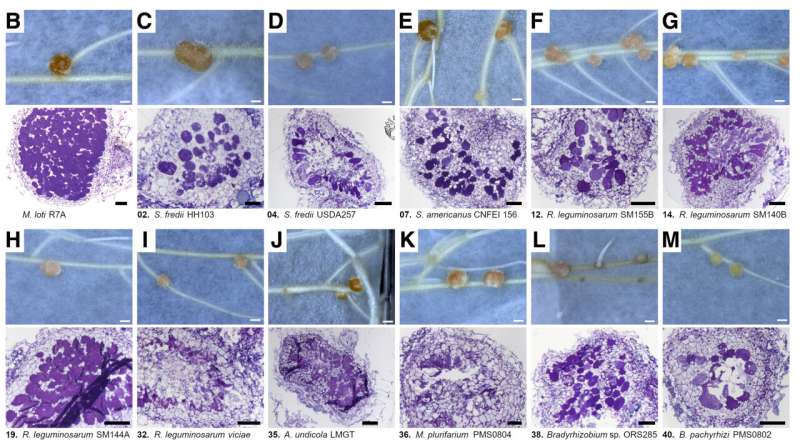This article has been reviewed according to Science X's editorial process and policies. Editors have highlighted the following attributes while ensuring the content's credibility:
fact-checked
peer-reviewed publication
proofread
A legume locus stimulates promiscuous interaction with soil bacteria

While promiscuity among humans is often scorned, symbiotic promiscuity can be a sign of excellent teamwork in other species. Plant growth, especially in legumes, flourishes through mutualistic interactions with soil bacteria, commonly known as rhizobia. A successful interaction culminates with the formation of a root nodule, where rhizobia provide nitrogen to the plant. This association depends on complex chemical dialogs, which restrict plant-bacterial compatibility. However, exceptional cases of symbiotic promiscuity may occur, and certain legumes can develop nitrogen-fixing nodules with diverse rhizobia.
A recent study published in Molecular Plant-Microbe Interactions by Mohammad Zarrabian of Aarhus University and colleagues discovered one such case with the legume Lotus burttii. While the closely related species Lotus japonicus developed nodules with only two strains, the researchers revealed that L. burttii can form nodules—properly colonized by bacteria—with up to 30 different rhizobial strains due to a single region, or locus, in the L. burttii genome.
This extraordinary symbiotic promiscuity regardless of the rhizobial strain indicates that the locus contains valuable information about genetic elements in legume-rhizobia symbiosis. In this context, studies have primarily focused on the bacterial perspective, but analyzing the plant perspective unveiled a key genetic region for rhizobial compatibility in L. burttii.
According to corresponding author Stig U. Andersen, the genetic analysis in this study can lead to crop improvement by naturally promoting their growth through symbiotic associations. "Our study lays the foundation for understanding the genetics of legume symbiotic promiscuity," Andersen comments. "This can allow development of crops that prefer a specific symbiont or are able to interact with a broad range of symbionts, depending on what is desirable in a particular agricultural system."
This research exposes the remarkable diversity of legume-rhizobium interactions in terms of host range and outcomes of the symbiotic interaction, an area of study fertile for further digging and cultivation.
More information: Mohammad Zarrabian et al, A Promiscuity Locus Confers Lotus burttii Nodulation with Rhizobia from Five Different Genera, Molecular Plant-Microbe Interactions® (2022). DOI: 10.1094/MPMI-06-22-0124-R
Journal information: Molecular Plant-Microbe Interactions
Provided by American Phytopathological Society


















